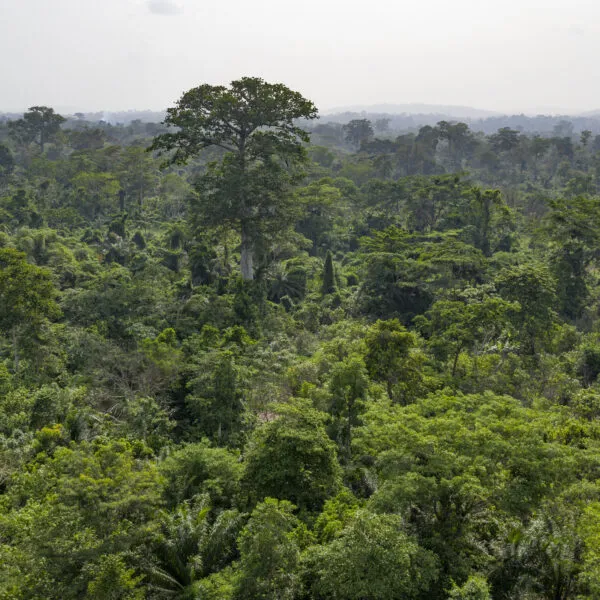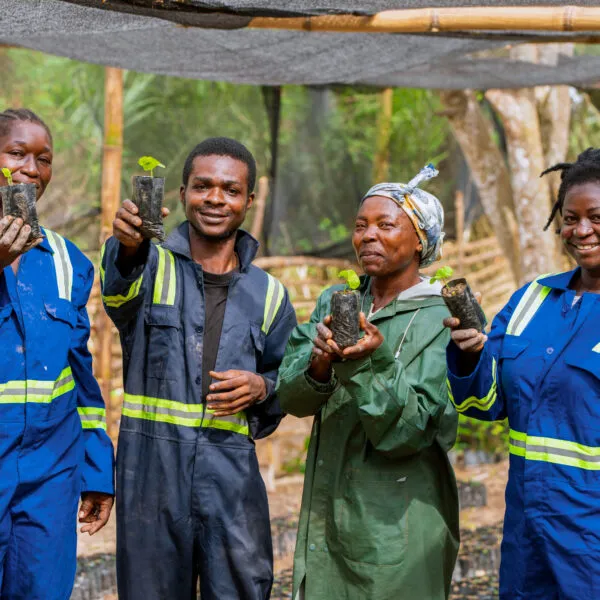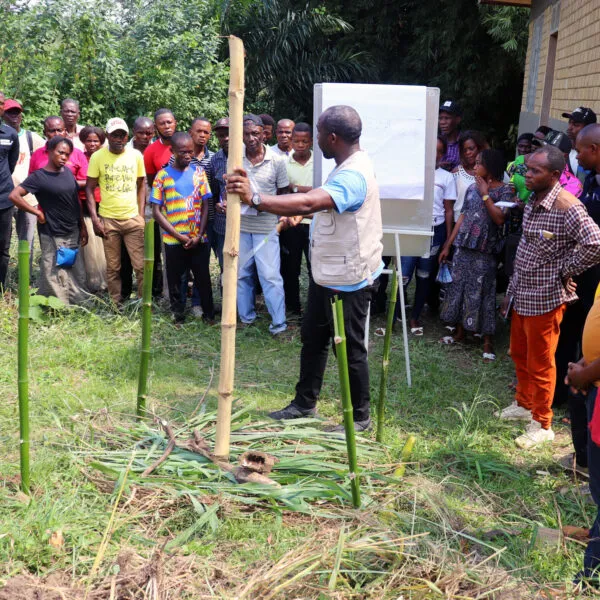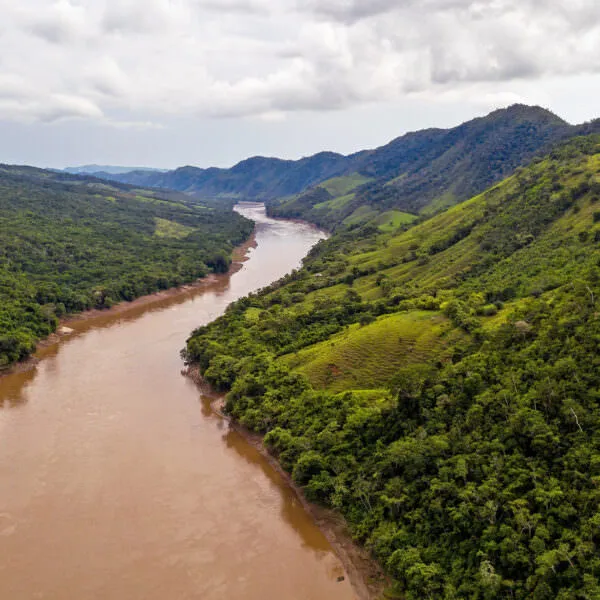Carbon storage and biodiversity: together, these elements indicate healthy forests and ecosystems that are more resilient to climate change. So, how do we measure them in community managed forests?
In 2016, the Forest Integrity Assessment (FIA) tool was launched to measure the biodiversity of natural forests using a simple checklist. Developed by the High Conservation Value (HCV) Network with support from WWF, the FIA tool is easy for non-experts to use, making it useful for forest communities around the world to measure the biodiversity rates of their regions.
Now, we’re working to make the FIA tool even more useful. As a member of the HCV Network, the Rainforest Alliance has adapted this tool to monitor both the forests’ capacity for carbon storage and biodiversity. In this way, we’re helping forest communities and companies make data-backed decisions about the landscapes they work in.
The importance of data measurement
The more oversight a forest community has on the health of their forests, the better they can protect and manage them. Data—including metrics like biodiversity and carbon—also helps to prove the benefits of community forestry, potentially leading to more funding and carbon capture rewards.
The FIA tool makes it easy for forest communities to gather this data. At the same time, it provides companies with critical knowledge about the impact of their green investments. In the future, this could lead to claims for companies to share with the public.
To refine and deploy this cost-efficient and collaborative measuring tool, the Rainforest Alliance, along with the HCV Network, WWF, and local partner SAPED, are working with forest communities in critically important landscapes—like the community forests in southern Cameroon.
Piloting the FIA tool in Cameroon through Forest Allies
Bordering the southern edge of the Dja reserve in Cameroon (which is part of the vast, forested TRIDOM landscape that spans three countries), village communities live alongside elephants, chimpanzees, and gorillas, and other threatened wildlife. Several community forest associations have formed to sustainably manage these precious forests. Community members depend on the forests for medicines, food, fuel, and building materials; some of them make a modest living from sustainably harvesting and selling trees and non-timber forest products.
However, illegal logging, agricultural expansion and mining could make these forests disappear. These threats don’t only endanger the forests themselves, but all the people and animals that rely on them—as well as the massive amount of carbon storage the forests provide. That’s why the Rainforest Alliance, particularly through the Forest Allies program, is supporting several forest communities to tackle these challenges with the help of the innovative FIA tool.
Step one: on-the-ground adaptation
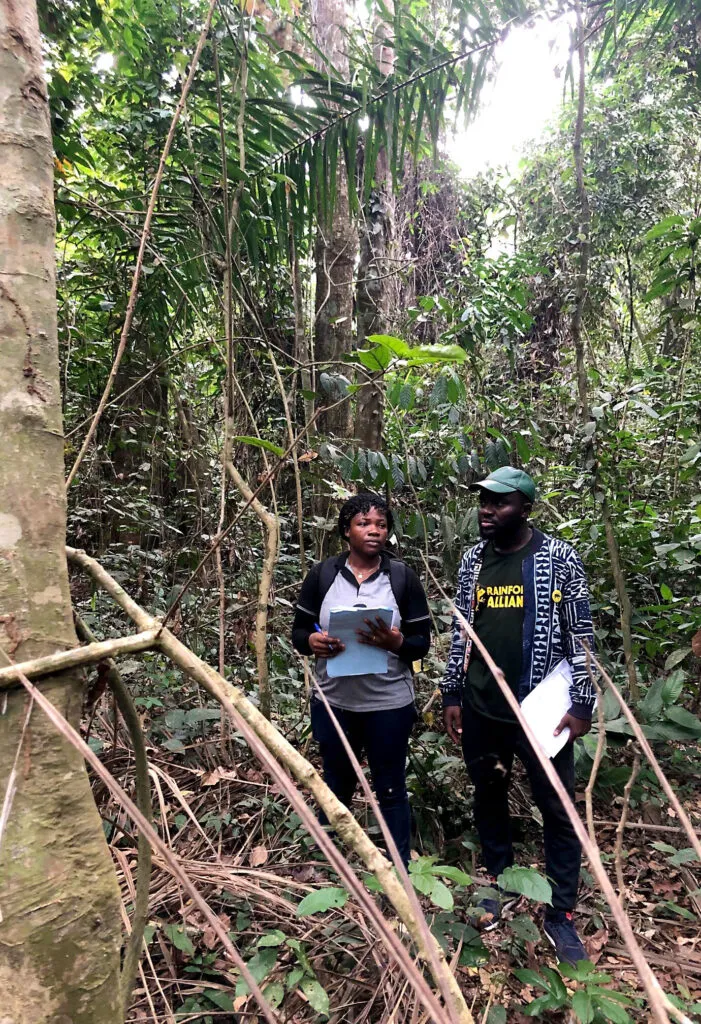
Forest Allies, funded by Proctor and Gamble and Kingfisher plc, is helping the Solidarites, Mvo Essindo and Femmes Rurales community forests to implement Integrated Community Forest Management. This includes revising their forest management plan; setting up and managing tree nurseries as needed; and doing market analyses for timber and non-timber forest products, like wild mangoes.
The first step was to adapt the FIA tool’s biodiversity checklist to southern Cameroon. We developed the checklist through a workshop with field experts, foresters, and ecologists. To test the robustness of the adapted tool for also measuring carbon, the Rainforest Alliance worked with the HCV Network and local forestry experts to collect field-level data of carbon stock measured in 100 plots over three different forest communities and the Dja Reserve. We then compared the measurements against the above-ground biomass collected using the FIA tool at the same sample points. Results showed that, even though the FIA data was collected in a much simpler manner, the measurements were calculated with 70 percent accuracy.
Step two: collaborating on the manual
After these promising results, the next step was a train-the-trainer workshop. Convened by WWF and facilitated by the HCV Network, this workshop brought together the knowledge and experience of participants from the Rainforest Alliance, SAPED, and WWF field programs, as well as forestry experts from local universities and forestry institutions. In the end, the workshop produced a draft manual—adapted for southern Cameroon—to measure both biodiversity and carbon using the FIA tool.
“Monitoring carbon in community forests is very costly and challenging. We wanted a tool that put communities at the center of managing their forests,” said Emmanuelle Berenger, forest lead at the Rainforest Alliance. “The Forest Integrity Assessment tool is both cost-effective and collaborative, while being simple and, as we have now demonstrated, credible.” The HCV Network will soon publish the adapted FIA manual and checklist for this region so the public can use this free and open-source tool.
After the workshop, field staff from Rainforest Alliance and SAPED used the manual to train members of their partnering community forests, and together used the tool to make formal revisions to their forest management plans.
What’s next?
While the goal for this data is not to access voluntary carbon markets, companies can still use it to make claims and report on change in forest carbon stock over time for multi-stakeholder programs, like Forest Allies.
The Rainforest Alliance aims to scale up the FIA tool to all the countries where we support community forestry. In 2024, we are adapting it for Guatemala’s Maya Biosphere Reserve.
Want to support us in developing this tool to help communities conserve and restore their forests, or use it to meet your company’s SDG goals? Join Forest Allies to be part of this work.

